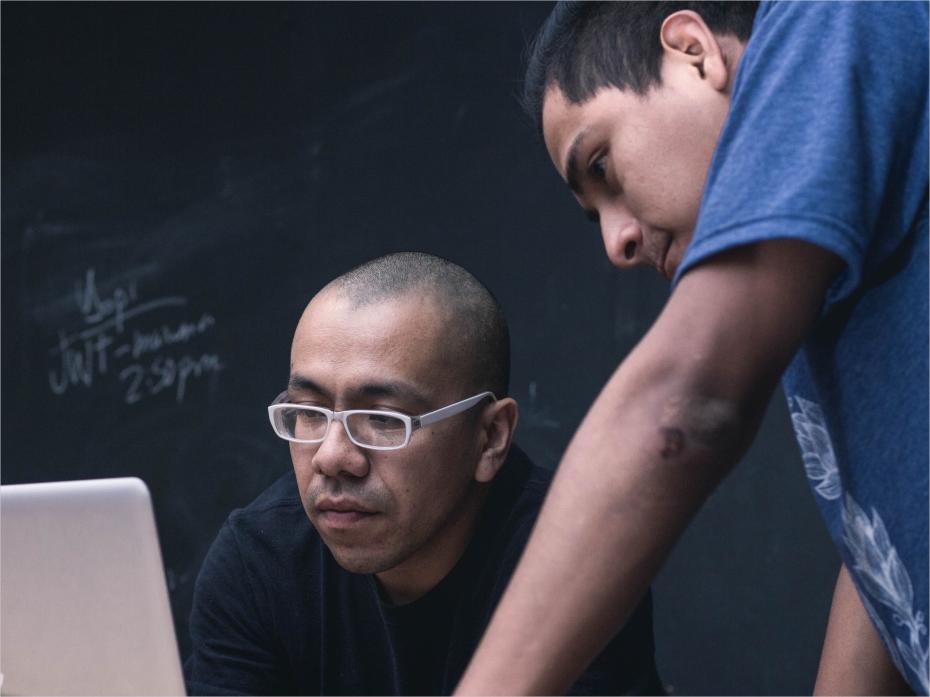
Comfort without coddling: how to make students comfortable in the classroom
As educators, we now hear the terms “traditional” versus “non-traditional” students more often. However, what does this mean to us? The higher education environment often thinks of a traditional student as someone who is a full-time student in their late teens or early twenties. A non-traditional student is often anyone part-time, older than mid-twenties, or with a family or other significant outside responsibility. Often, we are encouraged to focus on these terms, even though every student, regardless of the term assigned to them by academia, is different and will need a different approach to learning. One thing they have in common, though, is that all students want an environment where they are comfortable and free to learn, make mistakes and grow.
It’s critical to remember that we as educators are there to guide them, almost as if we were their compass during the course. We support, encourage and cheer them on while pointing them in the right direction. However, there are boundaries to our assistance. Coddling, or “hand-holding” as some like to call it, does not allow students to grow and prosper. As an instructor or professor, it’s important to remind ourselves that we need to prepare students for when they step out of the classroom. There is a way to be encouraging while being firm.
- Spotlight guide: Catching students before they fall
- Confusion diffusion: nine ways to prepare students to work with uncertainty
- How can universities ensure all new students feel welcome?
Through my experience as an educator working with both traditional and non-traditional students, here are a few suggestions for fostering a comfortable classroom environment while encouraging students to remain independent.
How to foster student engagement
Seems simple enough, right? Engagement is a key factor in creating a welcoming environment to students. You want them to see that you are actively participating in their learning experience. When you engage, this breaks down some of the barriers students might have when starting your course. There are several ways to engage your students whether they are in-person or online:
Ask students questions
It’s not just up to the students to ask questions. Engage them in conversation or a discussion board comment. If they mention an idea or propose a new thought, ask them follow-up questions. Show that you are listening and care about what they have to say.
Send emails
If you’re not doing this already, I would be concerned. Announcements are great and should be a part of your weekly class bulletin. However, that is not enough. Sending more personalised follow-up emails shows care and concern for your students and lets them know that you’re noticing them or you want to send tips to assist them.
Have check-ins
Students can disengage easily in class, especially at the beginning of a term. If you see that a student has not participated or shown up to class for more than two weeks, then reach out. Check in with them, and make sure that they are OK. Periodically throughout the term, send out a general email to your students asking them how they are doing and whether they have any questions, comments or concerns. Open the floor to them, and you’ll be surprised by the reaction and goodwill it generates.
Leave class time for an open forum
If you are running an in-person class, leave five minutes at the beginning or end to have an open discussion. For those who teach online, outside a weekly discussion board for the topics being covered, have one as a central location for other questions. Similar to the emails, you can post videos or articles that you think would be interesting to them. Answer questions so everyone can see, just in case someone else is too shy to ask. This is all about making your students feel comfortable, particularly in asking for help, and giving them the space to do it.
Set the tone from the start
Creating a comfortable classroom environment starts on day one. You cannot wait until halfway through the term to think, “I should create a warm environment for my students.” If students do not feel encouraged and comfortable from the start, they will not engage along the way. And any hesitation could be the difference between them asking the key question that helps them understand a concept or them failing your course.
These are just a few suggestions that I have found work best. Feel free to adjust them to your needs. As educators, we want to guide students but not be so demanding that they are fearful to engage or ask questions. While there must be firm deadlines to prepare them for outside of the classroom, there also needs to be understanding.
Brooke Wilson is a credit and risk management professional alongside her work in academia as an adjunct professor. She serves as a faculty member for the MBA programme at CSU Global.
If you would like advice and insight from academics and university staff delivered direct to your inbox each week, sign up for the Campus newsletter.




